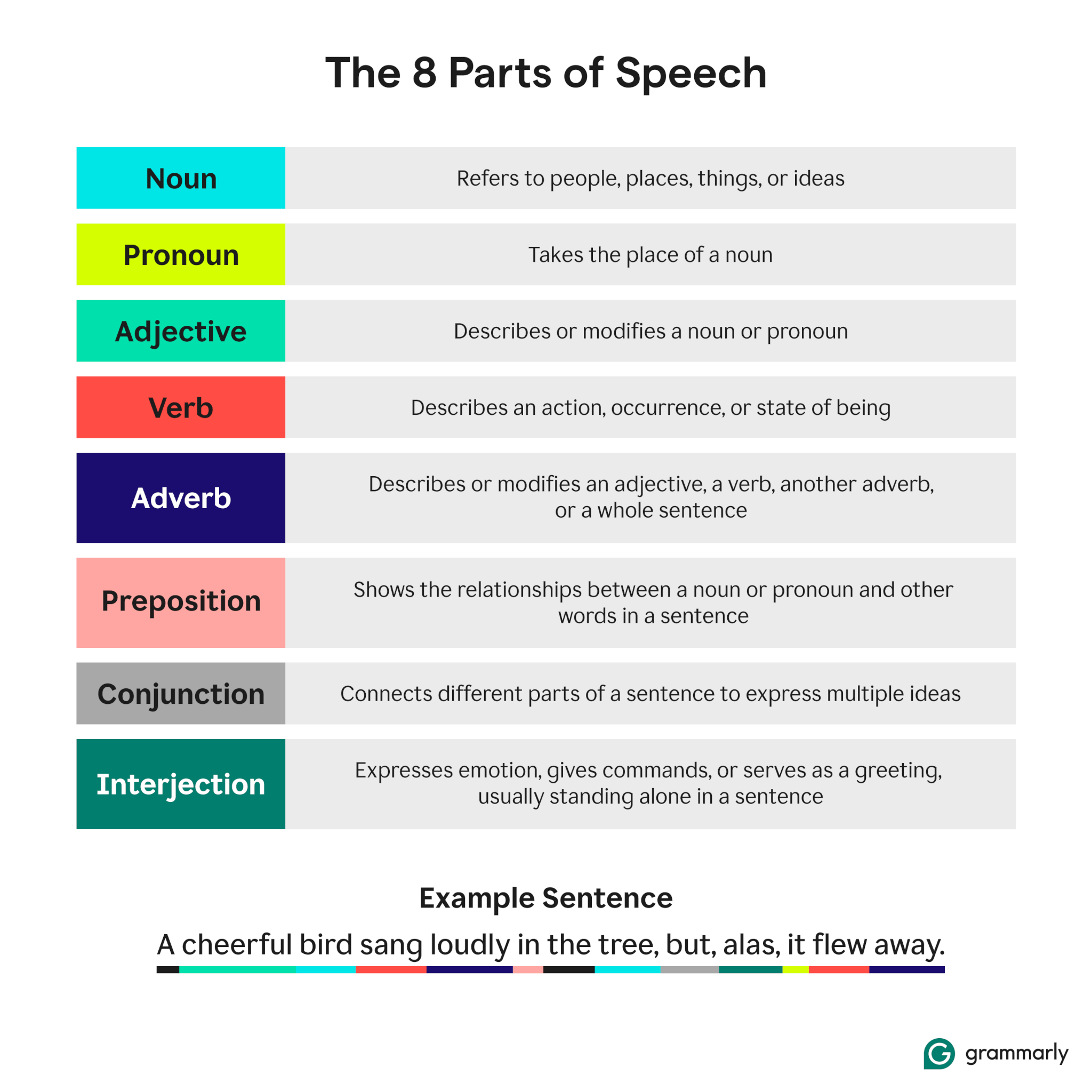When it comes to understanding the parts of speech in English grammar, it’s important to know the functions of nouns, verbs, adjectives, and adverbs. Each of these categories plays a crucial role in constructing sentences and conveying meaning. In this article, we will explore examples of nouns, verbs, adjectives, and adverbs to help you better understand how they work in sentences.
Nouns are words that represent a person, place, thing, or idea. They can serve as the subject or object in a sentence. Verbs, on the other hand, are action words that express what the subject is doing. Adjectives modify nouns by providing more information about them, while adverbs modify verbs, adjectives, or other adverbs by providing details on how, when, or where the action is taking place.
Noun Verb Adjective Adverb Examples
1. Noun: The dog (person) Verb: ran (action) Adjective: happy (describes the dog) Adverb: quickly (describes how the dog ran)
2. Noun: The teacher (person) Verb: taught (action) Adjective: knowledgeable (describes the teacher) Adverb: patiently (describes how the teacher taught)
3. Noun: The book (thing) Verb: captivated (action) Adjective: intriguing (describes the book) Adverb: intensely (describes how the book captivated)
4. Noun: The sun (thing) Verb: shone (action) Adjective: bright (describes the sun) Adverb: warmly (describes how the sun shone)
5. Noun: The child (person) Verb: laughed (action) Adjective: joyful (describes the child) Adverb: happily (describes how the child laughed)
Understanding how nouns, verbs, adjectives, and adverbs work together in sentences can greatly improve your writing and communication skills. By recognizing and using these parts of speech effectively, you can create more engaging and descriptive sentences. So, next time you write or speak, pay attention to the nouns, verbs, adjectives, and adverbs you use to convey your message with clarity and precision.
